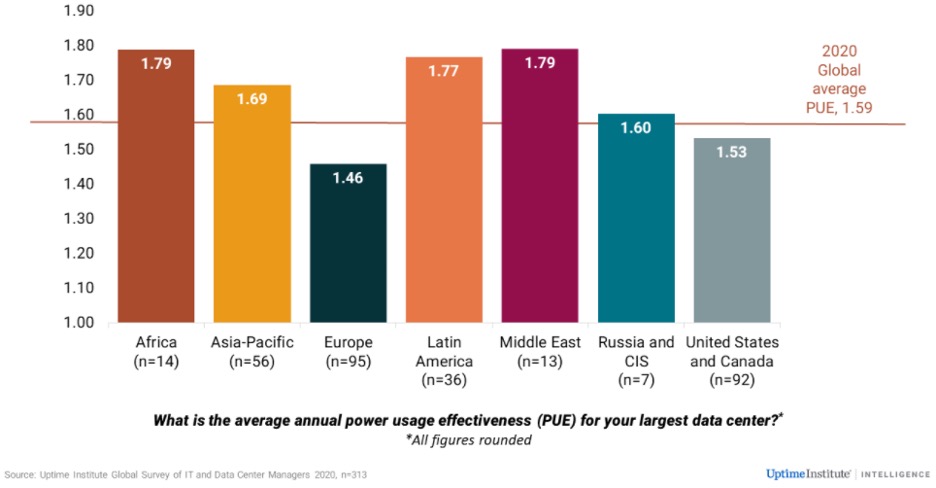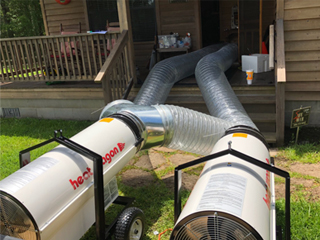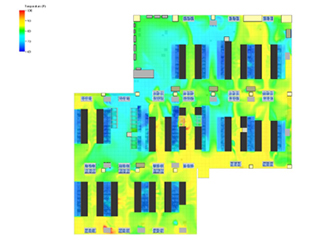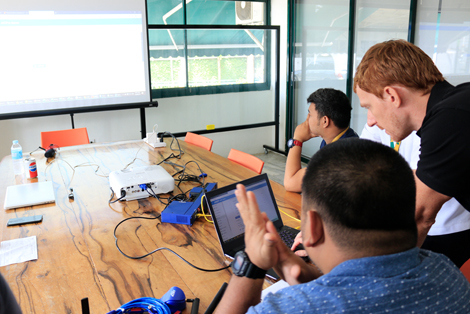
The quest for energy-efficient data centers has been getting stronger every year. As computing power gets better, and more organizations and enterprises go online, data centers have to accommodate massive data more than ever. The increase of data to process also means more energy to power these centers. This phenomenon has propelled companies to develop and run more energy-efficient data centers.
One way of measuring data centers’ energy efficiency, according to The Green Grid agreement in 2007, is through a Power Usage Effectiveness (PUE) metric. PUE is an index that divides the amount of energy used in a data center by the amount of energy needed to run the processors themselves. Results can range from one to three and more. A value of one is theoretically considered the most efficient. This means that the most efficient data center has a PUE closest to one. However, The Green Grid noted that PUE isn’t the perfect comparative metric across data centers, as every situation is different. PUE is only a good indication of how one data center improves over time.
Despite PUE being an ineffective comparative index, The Uptime Institute still gathers this metric every year through its global data center survey, in hope of determining the annual progress of global data centers. In 2020, they gathered the PUEs of 450 global data centers, segmented the results, and found that companies in Europe emerged as the most energy-efficient, followed by data centers in North America, while the Middle East and Africa remained the least efficient.

To gather this data, Uptime asks companies the average PUE of their largest data center during that year. It resulted in some companies having PUEs between 1 and 2.19 Some others who reported a metric outside the range are considered outliers or extreme cases. The average PUE of nearly 450 respondents is 1.59. “This number was down slightly from last year, but effectively continued a trend of no improvement, or marginal improvement, since 2013,” said the Uptime Institute.
For those who reported high PUEs, climate may be a factor. For example, Latin America, the Middle East, and much of the Asia-Pacific region have higher temperate profiles as well as high humidity, and water constraints. Because of that, they can’t take advantage of free cooling resources offered in colder environments, which have lower humidity, and an abundance of free-flowing cold water. A naturally cooler environment helps reduce energy costs related to keeping products cool.
Obviously, one factor for having less energy efficiency is the lack of energy-efficient solutions and services. Companies who hesitate to use energy-saving technologies and devices are prone to supply chain errors. They lack access to service technicians, hence having a more unstable power grid. In the long run, this high probability of error accounts for the requirement for higher levels of redundancy, and as a result, higher power usage.
Of the two regions who reported the lowest PUEs, Europe eclipsed America and Canada by five percent, despite having the same sample sizes. Uptime says it’s because of Europe’s higher energy prices and the more environmentally conscientious attitudes of operators and regulators. The attitudes may come as an effect of higher energy prices. Another contributing factor is the location of the majority of data centers. Most data centers in Europe are located in London, Amsterdam, Frankfurt, Nordic countries, and Dublin, where climates are relatively more temperate than other areas in the study.
In the Asia Pacific region, on the other hand, one in ten respondents reported a PUI higher than 2.19. When Uptime asked the respondents about their data centers’ energy efficiency, one in six companies didn’t know the answers, either because they didn’t operate a data center, or the data centers were not fully operational. In comparison, high PUE companies in the European and North American regions are twice as likely to know the answers to the questions. These companies, that know every detail of their data centers’ energy efficiency, consider having a lower PUE worthy of pursuit.




